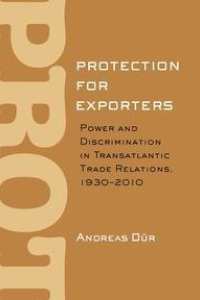
Liknande böcker
Negotiating NAFTA: Explaining the Outcome in Culture, Textiles, Autos, and Pharmaceuticals
Bok av Maryse Robert
International negotiations have become an important feature of the world trading system, but very few scholars have attempted to analyse this process. Using case studies in four areas - culture, textiles and apparel, autos, and pharmaceuticals - negotiated in the North American Free Trade Agreement (NAFTA), Maryse Robert uses a theoretical framework to help explain the outcome of such negotiations in terms of structure and process that. The structure of negotiations relates to states' objectives, outcomes, resources (in industry and in government), and issue-specific power. Process involves state's behaviour as expressed by its tactics during negotiation. Among the questions the author raises are: How are winning and losing defined in a given issue area? What are a state's resources as it enters a trade negotiation? Are all resources equally important? Is the utility of some tactics linked to certain resources? The key message of the book is that it is the right mix of resources and tactics that determines the outcome of negotiation. Very few scholars have attempted to analyse trade negotiations. Using case studies in four areas - culture, textiles and apparel, autos and pharmaceuticals - Robert proposes a theoretical framework to help explain the outcome of a negotiation in the field of international trade. She argues that this outcome has two characteristics: structure and process. The former is constituted of the resources a state brings to the table in a given issue area; the latter refers to the state's behaviour as expressed by its tactics during negotiation. The key message of the book is that it is the right mix of resources and tactics that determines the outcome.







